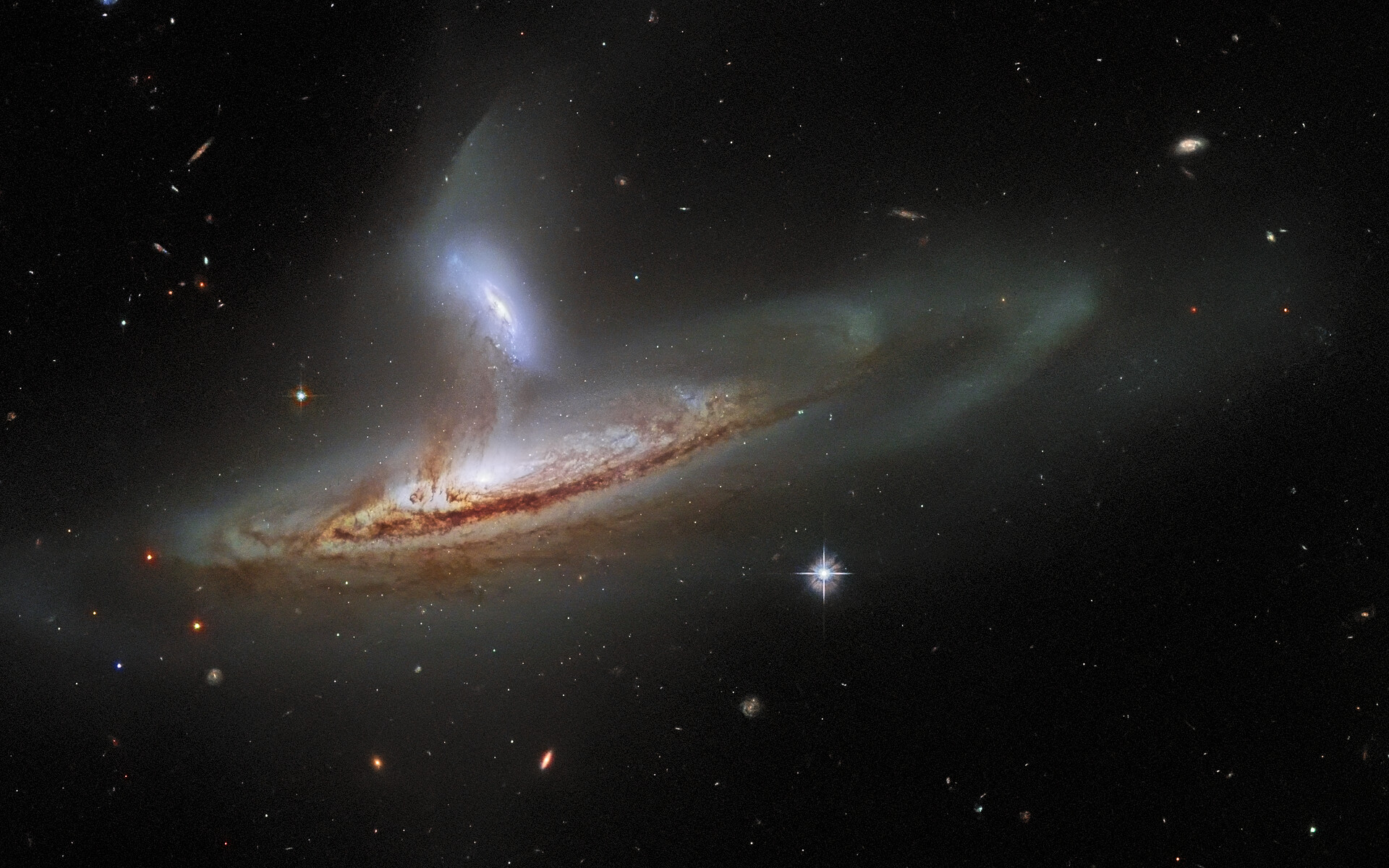
Sci&Tech Editor Gwydion Elliott discusses a dramatic new image from the space telescope
The Hubble space telescope has captured a stunning new image of two distant galaxies colliding. Visible in the image are the strands of glowing matter – gas, dust, and even whole solar systems being pulled across space from the smaller galaxy to its larger neighbour.
Though this example is rare for its clarity and beauty, this type of interaction isn’t uncommon in the universe. Despite the vast enormity of space, galaxies are often pulling on one another, the forces of gravity having significant impacts on their shape and structure as they brush past each other or collide and merge into one. The collision of two galaxies is also an opportunity to re-vitalise star formation in a dying galaxy, as new material is brought together, compressed by gravitational forces. Our galaxy, the Milky Way, has interacted with many others in the past, and is currently on a head-on collision course with Andromeda. In 4 billion years the two will meet and pass through each other, before returning together 2 billion years later to form a new galaxy some have nicknamed Milkdromeda.
Our galaxy, the Milky Way […] is currently on a head-on collision course with Andromeda
The colliding galaxies pictured by Hubble have much less imaginative names. The larger of the two is a barred spiral galaxy named NGC 169. This is a huge galaxy – its brightest central portion spans 140,000 light years, with its outer arms stretching far beyond that. Its structure of spiralling arms surrounding a central glowing bar at its core, is very similar to that of our own galaxy. The smaller polar ring galaxy being pulled towards NGC 169 is named IC 1559. The astronomer Halton Arp catalogued the pair in his 1966 Atlas of Peculiar Galaxies, collectively naming the two Arp 282.
Arp’s atlas catalogued more than 300 galaxies which were interacting or merging with each other, in order to improve astronomers’ then limited understanding of how galaxies changed over time. Interestingly, Arp himself argued that these images weren’t of colliding galaxies, as is the scientific consensus, but rather showed larger galaxies ejecting smaller ones into space. Perhaps it’s for this reason that he described the smaller galaxy pictured as ‘raining’ into its partner, rather than being pulled in, as astronomers would see it today.
Both galaxies in the image have supermassive black holes at their centres. These have enough of a gravitational pull to keep the rest of the galaxy swirling around them, and when the galaxies collide the black holes will merge into one and send gravitational waves rippling over the universe. These waves were first theorised in 1905 but weren’t detected until 2015 by the Laser Interferometer Gravitational-Wave Observatory (LIGO) operated by Caltech and MIT in the US. By bouncing lasers inside 4km long tubes, scientists could detect the waves as they rippled the fabric of spacetime, passing through Earth following the collision of two galaxies 1.3 billion years ago.
The new image is a reminder that the universe is a dynamic and ever-changing place, with action playing out on scales too vast for us to watch play out. Luckily, modern astronomy allows us to see the beautiful snapshots of dramatic exchanges such as these.
For more Sci&Tech check out these stories below:
Creature Feature: Scottish Highland Cattle
‘World’s Oldest Map of the Stars’ Coming to the British Museum

Comments